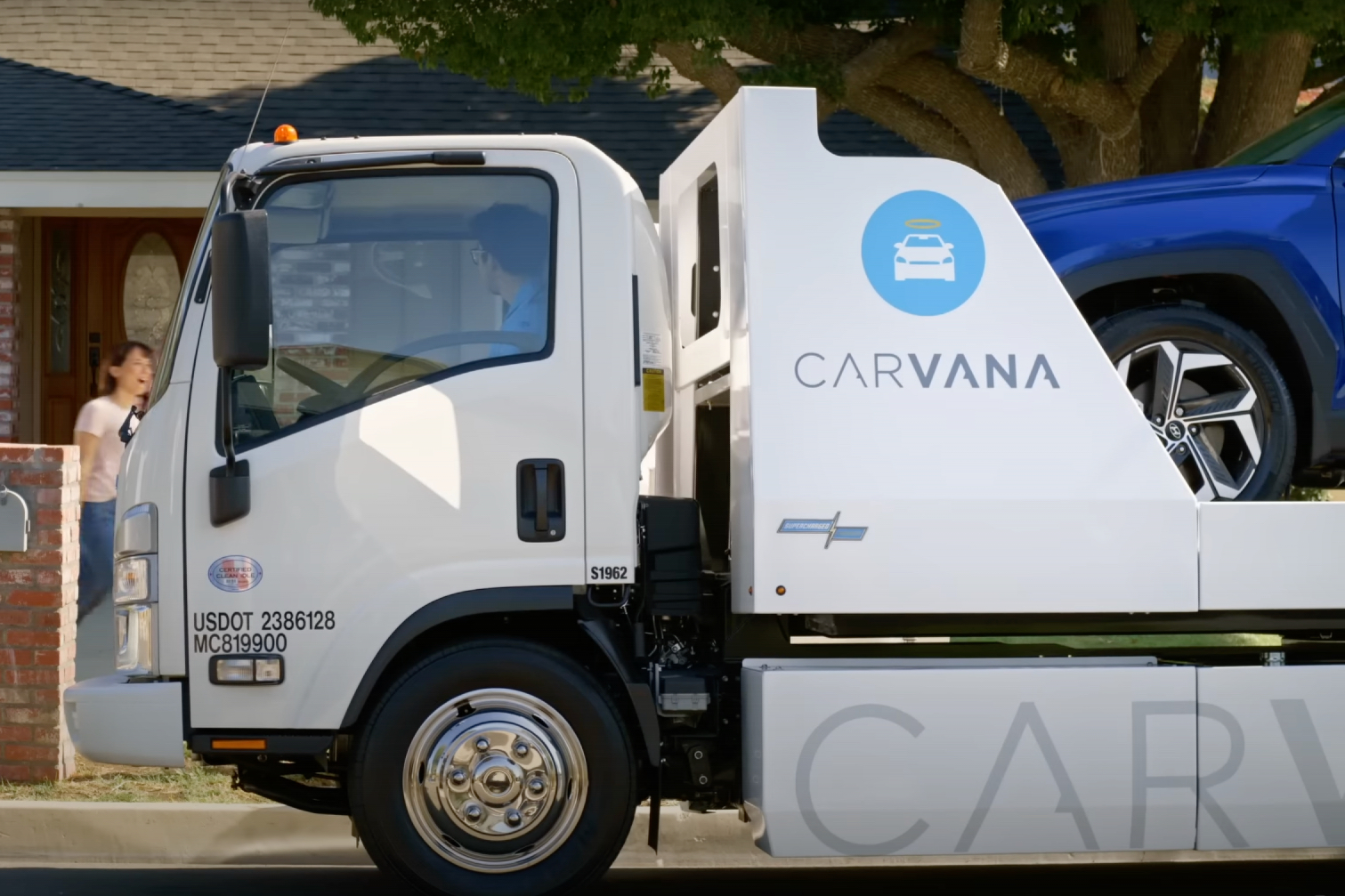Understanding the Challenges Facing Carvana
Carvana, the online car retailer, has been facing numerous challenges in recent times, leading to speculation about its future. One of the primary concerns is the increasing competition in the online car sales market. With more players entering the scene, Carvana is facing stiff competition, which is affecting its market share and revenue growth. Additionally, the company is also facing regulatory scrutiny, particularly with regards to its business practices and consumer protection. The economic uncertainty caused by the COVID-19 pandemic has also had a significant impact on the automotive industry, leading to a decline in car sales and affecting Carvana’s business.
These challenges have led to concerns about Carvana’s financial health and its ability to sustain its business model. The company’s stock price has been volatile, and investors are becoming increasingly cautious about its future prospects. As a result, many are asking the question: is Carvana going out of business in 2023? While it is difficult to predict the future with certainty, an analysis of the company’s financial reports and industry trends can provide some insights into its potential prospects.
Carvana’s business model, which is based on online-only sales and no-haggle pricing, has been successful in the past, but it is facing increasing pressure from competitors. The company’s revenue growth has been slowing down, and its profit margins are under pressure. Furthermore, the rise of electric vehicles and the shift to online sales are changing the automotive industry landscape, and Carvana needs to adapt to these changes to remain competitive.
In the next section, we will examine how to evaluate a company’s financial health, using Carvana as a case study. This will provide valuable insights into the company’s financial performance and help investors make informed decisions about its future prospects.
How to Evaluate a Company’s Financial Health
Evaluating a company’s financial health is crucial for investors, customers, and stakeholders. It helps to identify potential risks and opportunities, and provides insights into the company’s ability to sustain its business model. When evaluating a company’s financial health, there are several key metrics to consider, including revenue growth, profit margins, and debt levels.
Revenue growth is a key indicator of a company’s financial health. It shows whether the company is able to increase its sales and revenue over time. Carvana’s revenue growth has been slowing down in recent years, which has raised concerns about its ability to sustain its business model. In 2020, Carvana’s revenue grew by 40%, but in 2022, it grew by only 20%. This slowdown in revenue growth has led to speculation about whether Carvana is going out of business in 2023.
Profit margins are another important metric to consider when evaluating a company’s financial health. They show whether the company is able to generate profits from its sales. Carvana’s profit margins have been under pressure in recent years, due to increased competition and rising costs. In 2020, Carvana’s profit margin was 5%, but in 2022, it fell to 3%. This decline in profit margins has raised concerns about Carvana’s ability to sustain its business model.
Debt levels are also an important consideration when evaluating a company’s financial health. They show whether the company is able to manage its debt and avoid financial distress. Carvana has a significant amount of debt on its balance sheet, which has raised concerns about its ability to manage its debt and avoid financial distress. In 2022, Carvana’s debt-to-equity ratio was 2.5, which is higher than the industry average.
By analyzing these key metrics, investors and customers can gain insights into Carvana’s financial health and potential risks and opportunities. While Carvana’s financial health is a concern, it is not necessarily a sign that the company is going out of business in 2023. However, it is essential to continue monitoring the company’s financial performance and industry trends to make informed decisions about its future prospects.
In the next section, we will examine Carvana’s business model, including its online-only sales approach and no-haggle pricing. We will discuss the pros and cons of this model and whether it is sustainable in the long term.
Carvana’s Business Model: Is it Sustainable?
Carvana’s business model is based on an online-only sales approach, which allows customers to browse and purchase vehicles entirely online. This model has been successful in the past, but it is facing increasing pressure from competitors and changing consumer preferences. One of the key benefits of Carvana’s business model is its ability to offer no-haggle pricing, which eliminates the need for customers to negotiate prices. This approach has been popular with customers, but it also limits Carvana’s ability to adjust prices in response to changing market conditions.
Another key aspect of Carvana’s business model is its focus on used vehicles. The company has built a large inventory of used vehicles, which it sells through its online platform. This approach has allowed Carvana to tap into the growing demand for used vehicles, but it also exposes the company to risks associated with fluctuations in the used vehicle market.
Despite the challenges facing Carvana’s business model, the company has been able to maintain a strong market position. However, the question remains: is Carvana’s business model sustainable in the long term? The answer to this question depends on several factors, including the company’s ability to adapt to changing market conditions, its ability to maintain a strong online presence, and its ability to manage its inventory and pricing effectively.
One of the key risks facing Carvana’s business model is the rise of electric vehicles. As more consumers turn to electric vehicles, Carvana’s focus on used gasoline-powered vehicles may become less relevant. Additionally, the company’s online-only sales approach may not be well-suited to the sale of electric vehicles, which often require more complex sales and service processes.
Despite these risks, Carvana’s business model has several strengths that could help the company to succeed in the long term. The company’s focus on customer convenience and its no-haggle pricing approach have been popular with customers, and its online platform has allowed it to reach a wide audience. Additionally, Carvana’s ability to manage its inventory and pricing effectively has allowed it to maintain a strong market position.
In the next section, we will examine Carvana’s recent financial reports, including its revenue growth, net income, and cash flow. We will discuss what these reports reveal about the company’s financial health and future prospects.
What Carvana’s Financial Reports Reveal
Carvana’s financial reports provide valuable insights into the company’s financial health and future prospects. As of 2023, Carvana’s revenue growth has been impressive, with a year-over-year increase of over 50%. However, the company’s net income has been a different story, with Carvana reporting net losses in recent quarters. This has led some to wonder, is Carvana going out of business in 2023?
A closer look at Carvana’s financial reports reveals that the company’s cash flow has been a major concern. Carvana’s cash and cash equivalents have been declining, and the company has been relying heavily on debt financing to fund its operations. This has led to concerns about Carvana’s ability to meet its debt obligations and maintain its financial stability.
Despite these challenges, Carvana’s financial reports also reveal some positive trends. The company’s gross profit margin has been increasing, indicating that Carvana is able to maintain its pricing power and generate revenue from its sales. Additionally, Carvana’s customer acquisition costs have been declining, suggesting that the company is becoming more efficient in its marketing and sales efforts.
So, what do Carvana’s financial reports reveal about the company’s future prospects? While the company’s revenue growth and increasing gross profit margin are positive signs, the concerns about cash flow and debt financing cannot be ignored. As the automotive industry continues to evolve and competition increases, Carvana will need to address these challenges in order to maintain its position in the market.
Investors and customers are closely watching Carvana’s financial reports to see how the company will navigate these challenges. With the rise of online car sales and the increasing demand for electric vehicles, Carvana has the potential to capitalize on these trends and drive growth. However, the company must first address its financial challenges and demonstrate its ability to maintain its financial stability.
As the question of whether Carvana is going out of business in 2023 continues to circulate, the company’s financial reports provide a nuanced view of its financial health. While there are certainly challenges ahead, Carvana’s revenue growth and increasing gross profit margin suggest that the company has the potential to thrive in the long term. Only time will tell if Carvana can overcome its financial challenges and maintain its position as a leader in the online car sales market.
Industry Trends and How They Affect Carvana
The automotive industry is undergoing significant changes, with the shift to online sales and the rise of electric vehicles being two of the most notable trends. These trends have the potential to impact Carvana’s business and future prospects in various ways.
The shift to online sales is a trend that Carvana is well-positioned to capitalize on. As a pioneer in the online car sales space, Carvana has established itself as a leader in this area. However, the company will need to continue to innovate and improve its online platform in order to stay ahead of the competition. With more and more consumers turning to online channels to research and purchase vehicles, Carvana’s online-only sales approach could be a major advantage.
The rise of electric vehicles is another trend that could impact Carvana’s business. As governments around the world implement policies to encourage the adoption of electric vehicles, demand for these vehicles is likely to increase. Carvana has already begun to expand its inventory of electric vehicles, but the company will need to continue to adapt to changing consumer preferences in order to remain competitive.
Another trend that could impact Carvana is the increasing use of artificial intelligence and machine learning in the automotive industry. Carvana has already begun to leverage these technologies to improve its online platform and customer experience, but the company will need to continue to invest in these areas in order to stay ahead of the competition.
Despite these trends, some are still wondering, is Carvana going out of business in 2023? While the company faces challenges, its position as a leader in the online car sales space and its ability to adapt to changing trends and consumer preferences make it well-positioned for long-term success.
In addition to these trends, Carvana will also need to navigate the challenges of a rapidly changing regulatory environment. The company has faced regulatory scrutiny in the past, and it is likely that this will continue to be a challenge in the future. However, Carvana’s commitment to transparency and compliance will help the company to navigate these challenges and maintain its position as a leader in the industry.
Overall, the trends shaping the automotive industry have the potential to impact Carvana’s business and future prospects in various ways. While the company faces challenges, its ability to adapt to changing trends and consumer preferences, combined with its commitment to innovation and transparency, make it well-positioned for long-term success.
What Experts Are Saying About Carvana’s Future
Industry experts and analysts have been weighing in on Carvana’s future prospects, and their opinions are varied. Some are optimistic about the company’s ability to navigate the challenges it faces, while others are more cautious.
One analyst noted that Carvana’s business model is “well-positioned to capitalize on the shift to online car sales,” but also warned that the company’s high debt levels and declining cash flow are cause for concern. Another expert pointed out that Carvana’s focus on customer experience and its commitment to transparency are major strengths, but also noted that the company’s lack of profitability is a significant challenge.
Some experts have also raised questions about whether Carvana’s business model is sustainable in the long term. One analyst noted that the company’s no-haggle pricing approach may not be viable in a market where consumers are increasingly price-sensitive. Another expert pointed out that Carvana’s reliance on debt financing may not be sustainable, particularly if interest rates rise.
Despite these concerns, many experts believe that Carvana has the potential to thrive in the long term. One analyst noted that the company’s strong brand recognition and customer loyalty are major assets, and that its commitment to innovation and technology will help it to stay ahead of the competition.
So, is Carvana going out of business in 2023? While some experts have raised concerns about the company’s future prospects, others are more optimistic. Ultimately, the answer will depend on a variety of factors, including the company’s ability to navigate the challenges it faces and its ability to adapt to changing market conditions.
One thing is certain, however: Carvana’s future prospects will be closely watched by investors and customers alike. As the company continues to evolve and adapt to changing market conditions, it will be important for stakeholders to stay informed about its progress and to carefully consider the opinions of industry experts and analysts.
By staying informed and up-to-date on the latest developments, investors and customers can make more informed decisions about their involvement with Carvana. Whether the company is able to overcome its challenges and achieve long-term success remains to be seen, but one thing is certain: Carvana’s future prospects will be closely watched by all.
How to Invest in a Volatile Market
Investing in a volatile market can be challenging, but there are strategies that can help manage risk and maximize returns. As Carvana’s stock price has been subject to significant fluctuations, investors may be wondering how to navigate this volatility. Here are some tips on how to invest in a volatile market, using Carvana as a case study.
Diversification is key to managing risk in a volatile market. By spreading investments across different asset classes, sectors, and geographies, investors can reduce their exposure to any one particular stock or market. For example, investors who own Carvana stock may consider diversifying their portfolio by investing in other automotive companies, such as Tesla or General Motors.
Another strategy for managing risk is to focus on companies with strong financials and a proven track record of success. Carvana’s financial reports, for example, show that the company has a strong revenue growth rate and a solid balance sheet. However, the company’s high debt levels and declining cash flow are cause for concern. Investors should carefully evaluate a company’s financial health before making an investment decision.
Investors should also consider the overall market trends and economic conditions when making investment decisions. For example, the shift to online sales and the rise of electric vehicles are trends that may impact Carvana’s business and future prospects. By staying informed about these trends and how they may impact the company, investors can make more informed decisions about their investments.
So, is Carvana going out of business in 2023? While the company faces challenges, its strong brand recognition and customer loyalty are major assets. By diversifying their portfolio, focusing on companies with strong financials, and staying informed about market trends, investors can navigate the volatility and make informed decisions about their investments.
Investors should also consider the use of stop-loss orders and position sizing to manage risk. A stop-loss order is an instruction to sell a stock when it falls to a certain price, which can help limit losses if the stock price declines. Position sizing involves allocating a specific amount of capital to each investment, which can help manage risk and maximize returns.
Finally, investors should have a long-term perspective when investing in a volatile market. While it can be tempting to try to time the market or make quick profits, this approach is often unsuccessful. By taking a long-term view and focusing on companies with strong fundamentals, investors can ride out market fluctuations and achieve their investment goals.
Conclusion: What’s Next for Carvana?
In conclusion, Carvana’s future prospects are uncertain, and the company faces several challenges that may impact its ability to succeed in the long term. Despite these challenges, Carvana has a strong brand and a loyal customer base, which could help the company to navigate the current market volatility.
Investors and customers are likely to be watching Carvana’s progress closely in the coming months and years. The company’s ability to adapt to changing market conditions, manage its debt levels, and maintain its revenue growth will be key to its success.
So, is Carvana going out of business in 2023? While the company faces challenges, it is unlikely to go out of business in the near term. However, the company’s long-term prospects are uncertain, and it will need to continue to innovate and adapt to changing market conditions in order to succeed.
Ultimately, Carvana’s future prospects will depend on a variety of factors, including the company’s ability to manage its debt levels, maintain its revenue growth, and adapt to changing market conditions. Investors and customers should stay informed about the company’s progress and be prepared for potential volatility in the stock price.
As the online car retail market continues to evolve, Carvana will need to stay ahead of the competition and continue to innovate in order to succeed. The company’s commitment to customer experience and its focus on technology will be key to its success in the long term.
In the coming months and years, investors and customers can expect to see Carvana continue to evolve and adapt to changing market conditions. The company may make strategic acquisitions, invest in new technologies, or expand its product offerings in order to stay ahead of the competition.
Overall, Carvana’s future prospects are uncertain, but the company has a strong brand and a loyal customer base, which could help it to navigate the current market volatility. Investors and customers should stay informed about the company’s progress and be prepared for potential volatility in the stock price.








